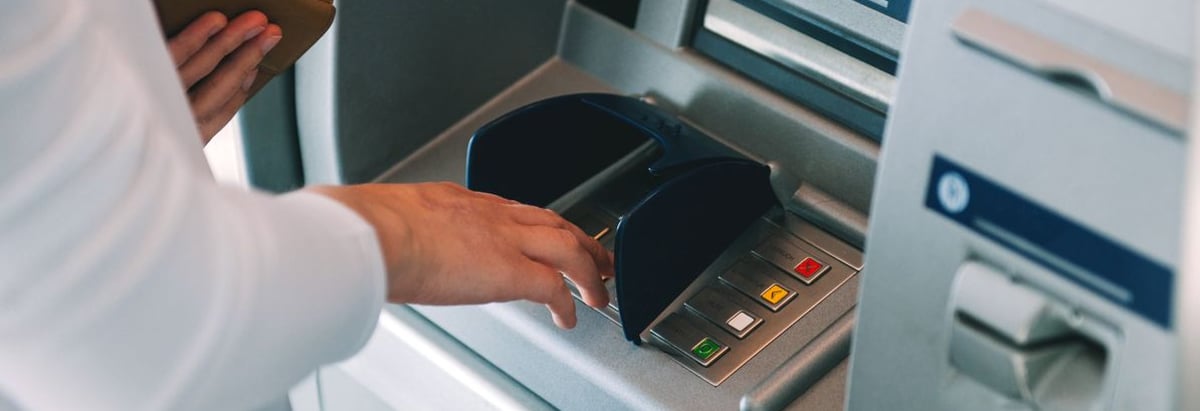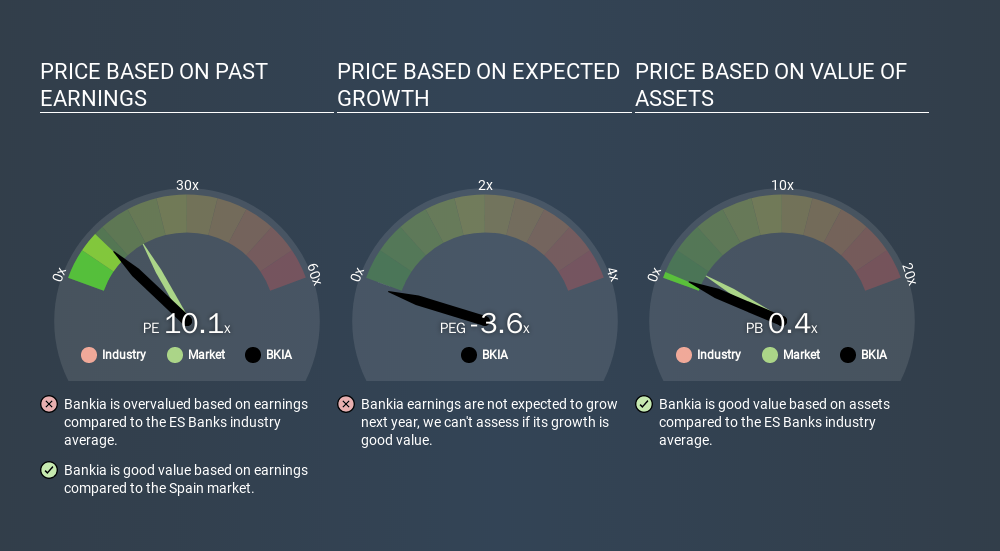
Today, we'll introduce the concept of the P/E ratio for those who are learning about investing. To keep it practical, we'll show how Bankia, S.A.'s (BME:BKIA) P/E ratio could help you assess the value on offer. Bankia has a P/E ratio of 10.05, based on the last twelve months. In other words, at today's prices, investors are paying €10.05 for every €1 in prior year profit.
Check out our latest analysis for Bankia
How Do You Calculate A P/E Ratio?
The formula for P/E is:
Price to Earnings Ratio = Price per Share ÷ Earnings per Share (EPS)
Or for Bankia:
P/E of 10.05 = €1.79 ÷ €0.18 (Based on the trailing twelve months to September 2019.)
Is A High Price-to-Earnings Ratio Good?
The higher the P/E ratio, the higher the price tag of a business, relative to its trailing earnings. That is not a good or a bad thing per se, but a high P/E does imply buyers are optimistic about the future.
How Does Bankia's P/E Ratio Compare To Its Peers?
The P/E ratio essentially measures market expectations of a company. You can see in the image below that the average P/E (10.0) for companies in the banks industry is roughly the same as Bankia's P/E.

That indicates that the market expects Bankia will perform roughly in line with other companies in its industry.
How Growth Rates Impact P/E Ratios
P/E ratios primarily reflect market expectations around earnings growth rates. When earnings grow, the 'E' increases, over time. That means unless the share price increases, the P/E will reduce in a few years. Then, a lower P/E should attract more buyers, pushing the share price up.
Bankia saw earnings per share improve by -7.8% last year. The company could impress by growing EPS, in the future. Further research into factors such as insider buying and selling, could help you form your own view on whether that is likely.
Remember: P/E Ratios Don't Consider The Balance Sheet
One drawback of using a P/E ratio is that it considers market capitalization, but not the balance sheet. So it won't reflect the advantage of cash, or disadvantage of debt. Theoretically, a business can improve its earnings (and produce a lower P/E in the future) by investing in growth. That means taking on debt (or spending its cash).
While growth expenditure doesn't always pay off, the point is that it is a good option to have; but one that the P/E ratio ignores.
Bankia's Balance Sheet
Net debt totals a substantial 219% of Bankia's market cap. This level of debt justifies a relatively low P/E, so remain cognizant of the debt, if you're comparing it to other stocks.
The Verdict On Bankia's P/E Ratio
Bankia trades on a P/E ratio of 10.1, which is below the ES market average of 17.3. It's good to see EPS growth in the last 12 months, but the debt on the balance sheet might be muting expectations.
When the market is wrong about a stock, it gives savvy investors an opportunity. If it is underestimating a company, investors can make money by buying and holding the shares until the market corrects itself. So this free visualization of the analyst consensus on future earnings could help you make the right decision about whether to buy, sell, or hold.
Of course, you might find a fantastic investment by looking at a few good candidates. So take a peek at this free list of companies with modest (or no) debt, trading on a P/E below 20.
If you spot an error that warrants correction, please contact the editor at editorial-team@simplywallst.com. This article by Simply Wall St is general in nature. It does not constitute a recommendation to buy or sell any stock, and does not take account of your objectives, or your financial situation. Simply Wall St has no position in the stocks mentioned.
We aim to bring you long-term focused research analysis driven by fundamental data. Note that our analysis may not factor in the latest price-sensitive company announcements or qualitative material. Thank you for reading.
Market Insights
Community Narratives



